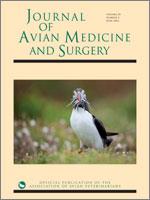Clinical signs of organophosphate and carbamate intoxication in wild birds can be mistaken for those of other diseases, thus potentially delaying diagnosis and implementation of life-saving treatment. The objective of this study was to determine the reference interval for blood cholinesterase activity in 20 different wild avian species from 7 different orders, thereby compiling a reference database for wildlife veterinarians. Blood was collected from birds not suspected of having organophosphate or carbamate toxicosis, and the modified Michel method, which determines the change in blood pH that directly correlates with cholinesterase activity, was used to measure blood cholinesterase levels. Results of change in blood pH values ranged from 0.11 for the white-tailed eagle (Haliaeetus albicilla) to 0.90 for the honey buzzard (Pernis apivorus). The results showed that even within the same family, interspecies differences in normal cholinesterase blood activity were not uncommon. The findings emphasized the importance of determining reference intervals for avian blood cholinesterase activity at the species level.
How to translate text using browser tools
1 June 2016
Whole Blood Cholinesterase Activity in 20 Species of Wild Birds
Igal H. Horowitz,
Esty G. Yanco,
Shmulik Landau,
Rona Nadler-Valency,
Nili Anglister,
Ariela Bueller-Rosenzweig,
Tal Apelbom-Halbersberg,
Olga Cuneah,
Vera Hanji,
Michel Bellaiche
ACCESS THE FULL ARTICLE
anticholinergic toxicosis
Avian
carbamate
cholinesterase
organophosphate
wildlife





